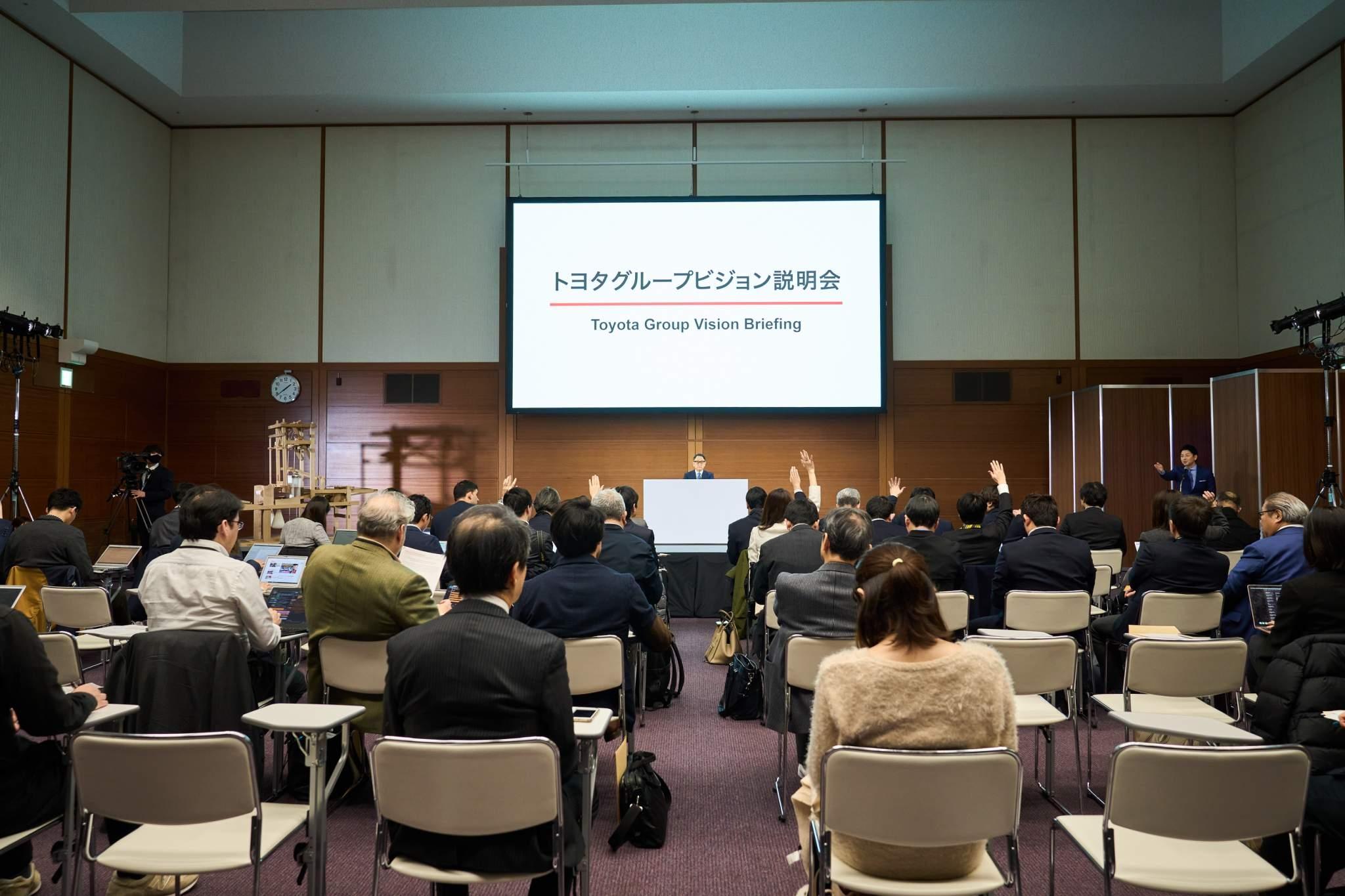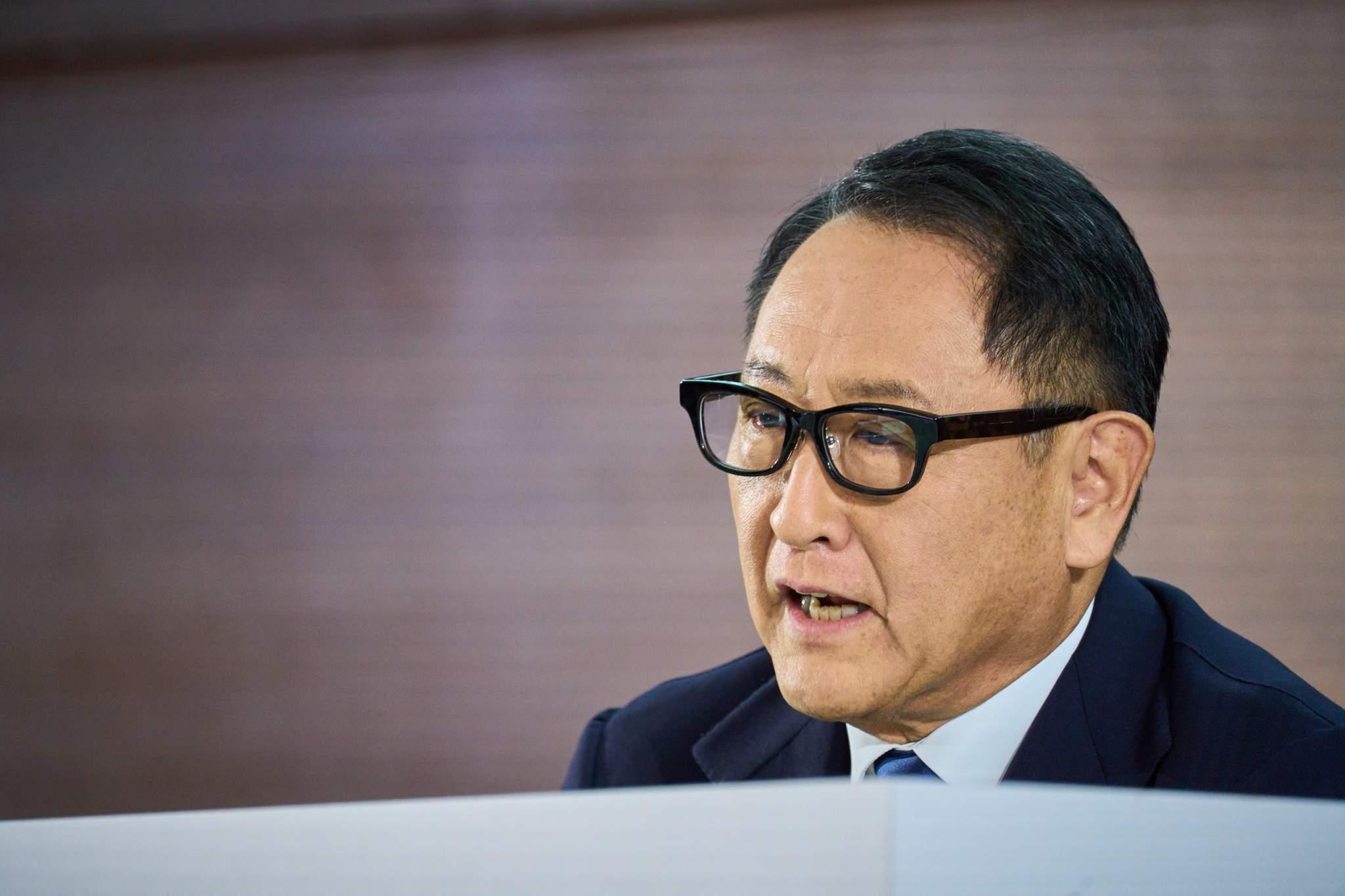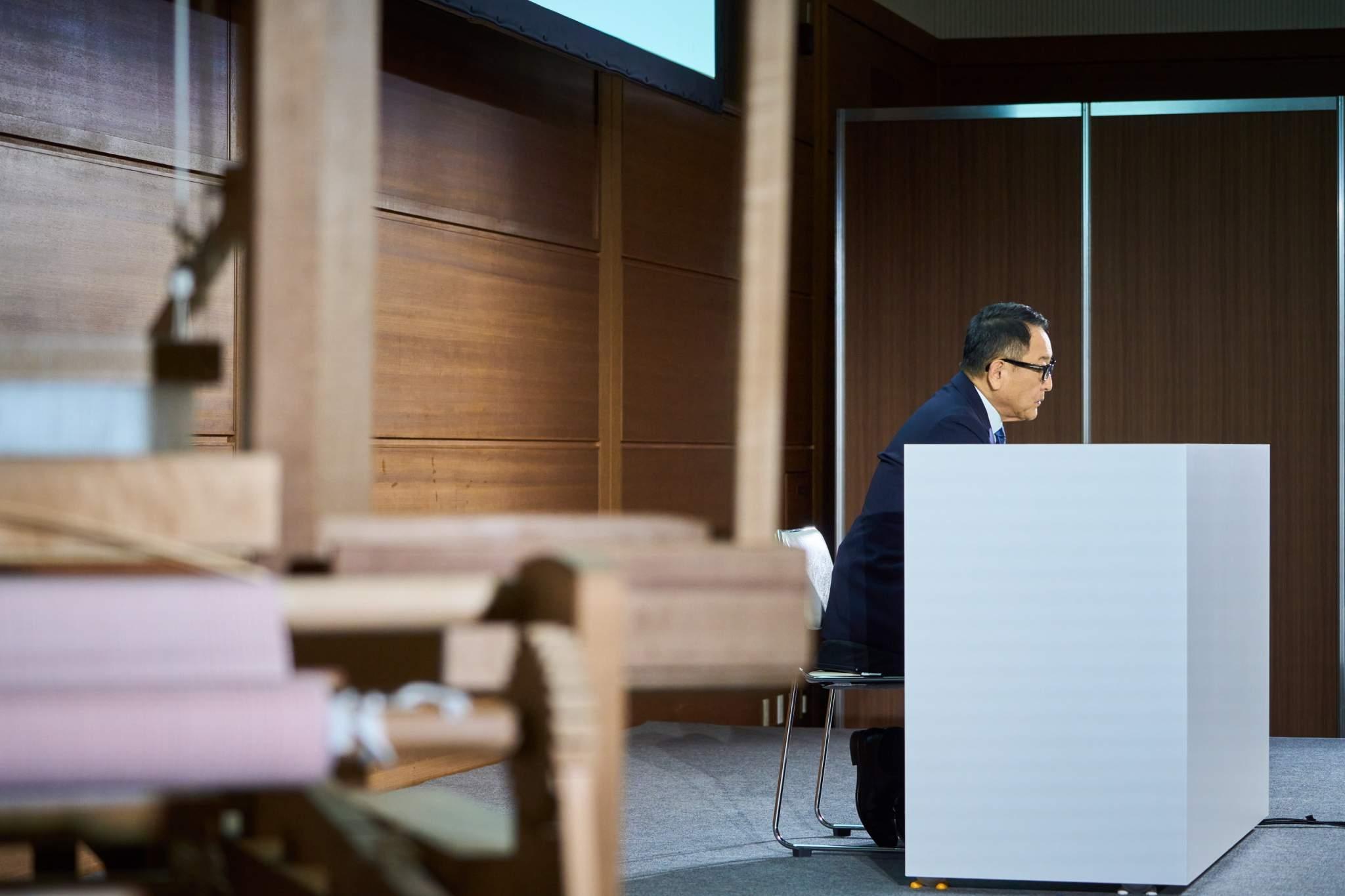
Toyota announced its vision for the Group's future direction: "Inventing our path forward, together." As the person responsible for guiding the Group, here is the message delivered by Chairman Akio Toyoda, along with questions from the press.
Q&A session (Updated February 5)
After outlining his thoughts behind the vision, Chairman Toyoda took questions from the press. Reporters eagerly asked the man responsible for Toyota about his response to the irregularities and plans for revamping the Group.

We’ve summarized the exchanges under four main topics.
Regarding the Group vision
Amid much public scrutiny of the irregularities at Group companies, could you please share your thoughts and reasoning behind announcing this new vision at the starting point of the Toyota Group?
Chairman Toyoda

Since this concerns the whole Group, I didn’t think it should take place at one company’s headquarters.
Seeking somewhere that was equally distant and felt like common ground for everyone, we came up with the Commemorative Museum of Industry and Technology.
This is also a location where the Toyota Group’s leaders have often gathered.
In that sense too, I felt that the Commemorative Museum would at least be better than Toyota’s head office as the place to make a fresh start, and that’s why we chose this venue for today.
We were going to present the vision on February 14, but then all of these issues arose.
To be honest, we waited until the Toyota Industries press conference yesterday (January 29). The earliest opportunity after that was today (January 30), so that’s how this was arranged.
Toyota has long adopted various guiding principles, such as the “Five Main Principles of Toyoda.” What do they have in common with this new vision, and what new changes or developments have you made?
Chairman Toyoda
In my mind, the words “Inventing our path forward, together” contain the past, present, and future. “Forward” points to the future, “path” is the present, and “inventing” refers to the Toyota Group’s origins, namely (company founder and renowned inventor) Sakichi Toyoda (i.e. the past).
Expressing the past, present, and future in modern terms, it sets out a shared vision for all of us to build a path for the future together.
I think the English version is even clearer than the Japanese, which doesn’t include the word “together.”
Upon becoming president of Toyota, I set forth the vision of “making ever-better cars.” People in the media said they didn’t know what I was talking about and asked why I couldn’t put up numerical targets.
Employees often asked me, “What do you mean by ‘ever-better cars?’”
I replied that this was for them to figure out and deliberately avoided explaining what “ever-better cars” meant to me. I believe that is why Toyota has come up with such a wide range of cars.
Had I supplied an answer, we may have ended up with nothing but sports cars.
Yet our TNGA, in-house company system, and regional focus have led to new launches (or model changes) for many different cars—commercial vehicles, everyday cars, family cars, and models that hadn’t been updated in many years.
Similarly, I believe the “path” in this vision will yield many different interpretations. And by setting a Group vision around our invention-driven origins, I hope to start by spurring a fresh start under the banner of making and inventing things.
Amid a string of irregularities within the Group, how have company leaders reacted to this vision? Could you share what was discussed at the briefing?
Chairman Toyoda
No company controls the Toyota Group. As I understand it, the term “governance” means to oversee, command, or administer.
In companies, governance is about creating administrative structures to ensure sound corporate management.
What I did at Toyota was restore authority to the genba and enable everyone, regardless of their position or background, to be involved in running the company. I view this as my own style of governance.
A nice way of putting it is that I created a corporate culture where the genba can think and act on its own initiative based on the straightforward vision of making ever-better cars.
You could also call it vision-driven management, genba-centered management, or product-centered management.
If you look up the origins of the word governance, you’ll find that it refers to guiding or steering a ship. To me, that sounds closer to what I have been doing than “overseeing, commanding, or administering.”
I was able to do this thanks to the philosophy, skills, and conduct of Toyota’s genba. And a simple vision: “Let’s make ever-better cars.”
Above all, I believe that in being the person responsible for Toyota’s past, present, and future, I was able to establish governance that returns authority to the genba.
There is a concept known as the “five stages of corporate decline” proposed by American economist Jim Collins. In expressing my intent to be responsible for the Toyota Group, I spoke with many Group company heads and genba leaders about wanting to create a corporate culture where the genba can think and act on its own initiative.
Instead of merely a one-way talk, I created an opportunity for exchanging information and presenting my ideas while answering all sorts of questions, mainly from genba personnel.
I imagine many people came to the venue expecting some rather strong words from me, but contrary to those expectations, I think the top management more or less embraced the idea that creating such circumstances gives everyone the chance to voice their opinions.
Response to irregularities
As Chairman, how do you regard the series of irregularities? What do you see as the causes of the successive irregularities uncovered within the Toyota Group?
Chairman Toyoda

We did things we should not have done. What were these things? The common thread between Daihatsu, Hino, and Toyota Industries Corporation is that they committed misconduct related to certification systems.
I hoped to look through the third-party committee reports, but have not had the time to go through everything.
I have, however, been briefed by people who verified it.
Japanese certification testing is a system of rule-based measurement for checking whether vehicles meet certain safety and environmental standards. If these standards are not met, the vehicles cannot be produced or sold.
Therefore, unless a car clears certification, it cannot be mass-produced. However, these companies mass-produced cars while engaging in certification irregularities. I believe that is what happened in these cases.
Because of the three companies’ misconduct in certification, products that should not have been sold were delivered to customers.
This is something that must never be allowed to happen. Certification systems exist to give customers peace of mind when driving their cars, and we abused these systems.
We recognize the extreme gravity of these acts, which betray the trust of our customers and shake the very foundations of the certification system. As the person responsible for the Group, I apologize.
I am sure that regaining our customers’ trust will take time. That is why, first of all, I am taking responsibility.
During my 14 years as Toyota’s president, I was able to make decisions and take responsibility. I resolved to do so, but being responsible for a group is not like being the head of a company.
In my experience, however, the first to lose trust was Toyota Motor Corporation. I think that experience and my track record in turning Toyota back into a carmaker make me a dependable advisor for the Group’s current leaders.
To prevent recurrence, we will move to track down the causes.
If there was a single cause, the solution would be very simple, but I believe these events stemmed from a combination of many factors.
Exactly one year has passed since I stepped down as president.
And in becoming chairman, I felt a degree of hesitation and a certain distance toward the current executive team and the individual companies, but I want to take another look at the Toyota Group and Toyota Motor Corporation as the person responsible for both.
I certainly don’t intend to be here just for show. Or to make myself stand out.
That said, I want to use the fact that I have restored authority to the genba as the first step for the three companies that have committed irregularities, and the Toyota Group, to move forward according to our vision.
I understand you faced various crises during your 14-year presidency—how serious are these irregularities, and what is their significance? I would like to hear your perspective.
Chairman Toyoda
These are events of great consequence. I think the biggest issue is that we have lost sight of our origins.
While explaining the Group vision, I thought again about the Toyota Group’s starting point.
I see it as the moment when a shift from automatic looms to automobiles was first discussed. If we lay out the lineage, initially it developed vertically, then at a certain point began to grow horizontally.
These situations (irregularities) have occurred at a time when Toyota is working to transform itself into a mobility company.
Despite having the same roots, the companies have become vast entities with different values, with most contact based on functional specialization.
Interacting on a functional basis doesn’t allow us to assess a company’s operations and management. And since Toyota is often the one placing orders, I think it becomes difficult to speak up to Toyota.
Instead of peculiar hierarchies, we need to recognize that we have inherited and grown together from the same monozukuri roots, and from this starting point talk normally, from an equal standpoint, with a new shared vision.
Having stepped down as president to be just an ordinary car-loving guy, as master driver, I too need to speak with many different people.
The title of Toyota Chairman gets in the way. While breaking down those barriers, I want to explore the individual circumstances with the peers I have gained over my 14 years as president.
These irregularities are serious, and I believe the main issue is that we have lost sight of our origins. That is why I chose to share them again today.
Yet simply doing so will not mean a fresh start. They must be thoroughly digested and understood before we can translate them into words and actions.
I will be looking into it and hope that you will also share your critical observations.

